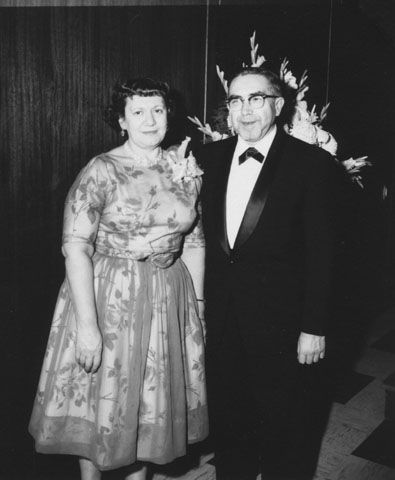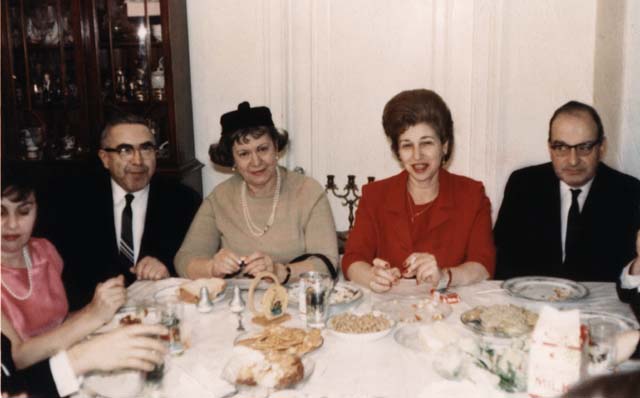
| Redlining and the Displacement of the Jewish Community of Dorchester, Roxbury, and Mattapan |
 |
In 1967, in the spirit of the Civil Rights Movement, many of Boston's politicians, bankers, philanthropists, and religious leaders decided to expand home ownership opportunities for Blacks and integrate Boston's segregated middle-class neighborhoods by making mortgages loans available to minorities, often with no money down. However, because Jewish organizations were active in the Civil Rights movement in official and unofficial capacities, and because Jews were perceived as being more tolerant than their Irish or Italian counterparts, a private agreement was reached among the bankers and politicians to make the loans available only in Boston's Jewish neighborhoods. The Yankee bankers may also have been motivated by a heavy dose of anti-Semitism and greed. Many of the residents in the Jewish neighborhoods had paid off their mortgages so the area was unprofitable for them.
The
resulting policy, known as "redlining," boomeranged. Instead of peacefully
integrating the Jewish neighborhoods, chaos reigned when increased integration
brought a dramatic rise in crime. Jews began to move out, their flight hastened
by panic-selling and unscrupulous real estate brokers engaging in blockbusting
tactics. With a large Black population competing for a piece of the American
Dream, and a limited area in which to find it, there was no lack of buyers.
Joseph Korff remembered this time:
"The banks were trying to take a position that would be useful from a public relations vantage point, so they agreed to provide federally-insured housing loans on a lower-than-usual underwriting standard. This policy allowed minority people to get loans that they normally would not have gotten. The banks got together and defined a neighborhood within which the loans would be granted. The area the banks defined was just precisely the Jewish neighborhoods of Mattapan, Roxbury, and Dorchester, home to 90,000 Jews.
"Blockbusters came and they blockbusted. My father fought Jewish flight. He went to various Jewish organizations, he dealt with the politicians, but it all happened very rapidly, within a two to three year time period. My father did what he could to stop it.
"Redlining greatly accelerated Jewish migration to the suburbs. In the normal pattern, immigrants settled in Roxbury. Then they stepped up a little in affluence and moved to Dorchester, but they were still basically lower middle class to middle class. When things got better, they moved to Mattapan and they started to sprout. When the wealth came in, they moved to Brookline and Newton. So it was a natural migration anyway. But the migration became extremely accelerated because of the redlining and subsequent violence. There were gangs that beat up Jewish children. The elderly became frequent targets of muggers.
"The Jewish power bases of wealth were allowing the redlining in communities where they no longer lived. The Combined Jewish Philanthropies permitted redlining to happen and may even have encouraged it. Many Jews and Blacks had worked extensively to foster integration. They did not take an active stand or delve deeply enough to understand that the Jewish neighborhoods were going to be decimated. The redlining and the lower underwriting standards when coupled with the activities of the blockbusters had the effect, however, of maintaining segregated communities. Legislation was subsequently passed, but it passed too late.
"My father would come home thoroughly frustrated and the stories would abound about the people getting calls from blockbusters. He would talk to his parishioners and tell them, Don't move, it's okay, we'll do something, and they would come back with stories about this one being mugged and that one being mugged and the broker saying a Black was moving in next door. Some of it was true, some of this wasn't true but it was totally exaggerated by unscrupulous real estate brokers coming in and profiting on the buying and selling. They would encourage Jews to sell their homes at below-market value to them and then the brokers would turn around and resell the houses at inflated prices to Blacks.
"My father was one of the last Jews left in Mattapan. My mother was mugged twice. After the first time my father still wanted to stay. After the second time he decided it was time to go."
In addition to his wife's muggings, two other traumatic events contributed
greatly to Rabbi Samuel Korff's decision to leave Dorchester. Both are described
in Levine and Harmon's book.
"...[In May 1971] thieves had broken into [Rabbi Korff's] Norfolk Street home while he was out on a condolence call. He'd returned to find his front door smashed in and his possessions strewn about his house. Valuable silver and other expensive items that had been in the Korff family for generations had been stolen, but it was in Korff's study that the greatest damage had been done. My most sacred documents have been destroyed, the rabbi told police. Sacred documents."
 |
|
Samuel and Nesha Korff in happier times |
"...In March 1973, Rabbi Samuel Korff would deliver the ultimate requiem for
Jewish Mattapan. Although most of his congregants had been relocated to other
neighborhoods...a handful of congregants at Kehillath Jacob had refused to
leave. One congregant, a retired fruit dealer named Charles Shumrack, had
repeatedly sought reassurance from Korff. I hope the synagogue will remain
open, Shumrack would tell his spiritual mentor after every morning service.
It will as long as you are alive and come to synagogue, Rabbi Korff would
tell him. Content, Shumrack would embrace the rabbi and walk back across the
street to his apartment, where he lived alone since the death of his wife two
years earlier. In mid-March, Shumrack was found murdered in his first-floor
apartment. His rooms had been ransacked, and his clothes were strewn across the
backyard. In his eulogy for Shumrack, Korff unleashed months of pent-up
frustration and anger: In days of old, when a murder was committed, the
civil and religious authorities, the elders and the judges, before even
searching for the criminal who perpetuated the crime, would reevaluate their own
deeds, and in a special ceremony would seek to know if ‘our hands did not spill
this blood.’ Korff then challenged future historians to determine how it
is possible for a Jewish community of 40,000 souls to be emptied in the course
of two years and how so much crime was concentrated in the short space of 40
blocks. Resorting to the language of the European Holocaust, Korff further
demanded an explanation as to how Mattapan, like Roxbury and Dorchester before
it, had become Judenrein.[1]
For Korff, the battle was over. He left Boston and prepared to rebuild a
congregation in the western suburb of Newton. The only question was whether
Shumrack would be the last Jewish casualty."[2]
Nesha remembered the move to Newton:
"We left Mattapan because a lot of the colored people moved in and they started to fight with the Jewish kids. So the people could not take it. They started moving out. They moved to different places and there was nobody left to go to shul so the shul fell apart. Some people who had moved from Mattapan to Randolph became connected to a synagogue in Randolph that absorbed the name of our synagogue and its memorial plagues.”
Starting over in a new area was not easy for the 60+-year-old rabbi, but Rabbi Korff began a new congregation in Newton, albeit much smaller than his last. He also established the Institute for Religious and Social Studies which brought together experts in various fields for lectures and discussions. He continued to serve the Jewish community in his many other roles, and despite his many responsibilities he found time to privately counsel troubled members in his congregation and work with students directly and indirectly in various area colleges.
 |
|
Samuel and Nesha Korff (left) at a family dinner with his sister and brother-in-law, Adele and Max Gass (right) |



[1] [2] [3]
[4] [5] [6]
[7] [8] [9]
[10]
[1] Judenrein is a German word meaning “free of Jews” and refers to the Nazi policy of eliminating Jews from towns and cities either by forced emigration, imprisonment, and/or murder during the Holocaust.
[2] Levine and Harmon. The Death of an American Jewish Community, pp. 320-321, 324-325.